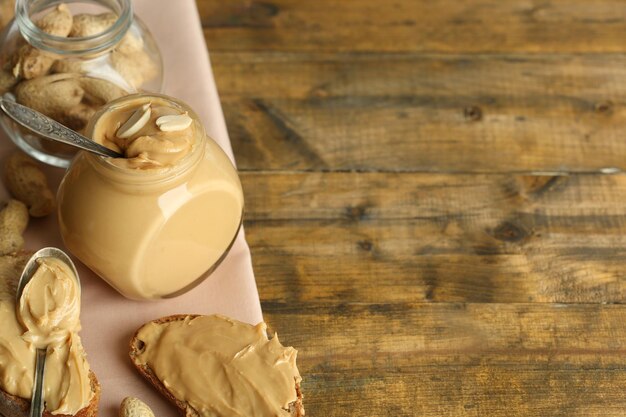Can Peanut Butter Be Part of a Healthy Diet for Diabetics?
For individuals managing diabetes, finding snacks that won’t spike blood sugar levels can be a challenge. Is peanut butter a safe and healthy option? The answer is a resounding yes, peanut butter can be a nutritious and satisfying snack for diabetics when consumed in moderation. However, like all dietary considerations for diabetes, it requires careful attention to detail.
Why Peanut Butter Can Be a Good Choice
Low Glycemic Index
Peanut butter has a low glycemic index (GI), which means it has a minimal effect on blood sugar levels. This makes it an ideal snack for people with diabetes, as it helps maintain stable sugar levels.
Rich in Protein and Healthy Fats
Containing a high proportion of protein and healthy fats, peanut butter can help keep you feeling full for longer periods, reducing the temptation to snack on quick carbohydrates that can spike glucose levels.
Nutrient-Dense
Peanut butter is rich in vitamins and minerals, including magnesium, which is crucial for maintaining blood sugar levels and overall health.
Tips for Choosing and Using Peanut Butter
Opt for Natural Varieties
When selecting peanut butter, choose those that are labeled as natural or have minimal ingredients. Avoid brands with added sugars, hydrogenated oils, or other additives that might adversely affect glucose management.
Watch Your Portion Sizes
While nutritious, peanut butter is calorically dense. Stick to a serving size of 1-2 tablespoons to manage calorie intake while still enjoying its benefits.
Pair with Low-Carb Foods
Enhance its benefits by pairing peanut butter with low-carb foods, like celery sticks or apple slices, to create a balanced snack that satisfies and nourishes.
Managing the Cost of Diabetes
Managing diabetes involves more than just dietary choices—it often includes managing finances to afford medications, medical visits, and other health tools. For those needing financial assistance, several programs and resources are available:
Medical Costs Assistance: Many states offer aid programs to help cover medical expenses for people with diabetes.
Supplemental Nutrition Assistance Program (SNAP) 🥦: Provides food-purchasing assistance to eligible low-income individuals and families.
Medicare and Medicaid: These programs can significantly reduce healthcare costs for those who qualify, especially seniors and low-income individuals.
Debt Relief Programs: Explore options to consolidate medical debts to make them more manageable.
Educational Grants 🎓: Eligible individuals can seek educational grants that might include benefits for diabetic healthcare education and related areas.
Financial constraints should never be a barrier to managing diabetes. By exploring these options, you can ensure a healthier lifestyle without straining your wallet.
Peanut butter, with its blend of high protein, healthy fats, and low GI, can be a valuable part of a diabetic's diet. Meanwhile, staying informed about financial aids ensures comprehensive diabetes management without the added stress of finances. 🍏
Resources to Explore for Financial Assistance:
- SNAP Program: Food assistance for eligible families 🥦
- Medicare/Medicaid: Health coverage support
- Debt Relief Options: Simplify and manage medical debt
- Educational Grants: Further education in health management 🎓
